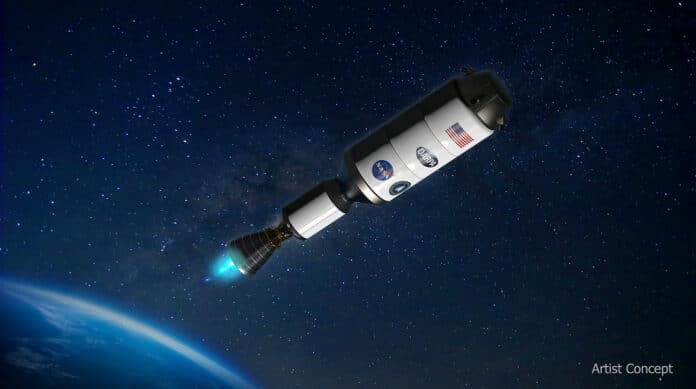Lockheed Martin has officially been selected by NASA and Defense Advanced Research Projects Agency (DARPA) to design, build, and test NASA and DARPA’s nuclear-powered rocket demonstrator in collaboration with other industry partners.
Called the Demonstration Rocket for Agile Cislunar Operations (DRACO), the program will test a nuclear-powered rocket in space as soon as 2027.
“Working with DARPA and companies across the commercial space industry will enable us to accelerate the technology development we need to send humans to Mars,” said NASA Deputy Administrator Pam Melroy. “This demonstration will be a crucial step in meeting our Moon to Mars objectives for crew transportation into deep space.”
NASA and DARPA collaborated on the DRACO program to advance the development of nuclear thermal rocket technology, supporting the goals of both agencies. For NASA, nuclear propulsion is one of the primary capabilities that could help humanity set up shop on Mars and other distant worlds.
Using a nuclear-powered rocket would allow for a shorter, faster trip to the Red Planet, reducing the mission’s complexity and risk for the crew. Compared to traditional chemical rockets, this type of rocket can be more than twice as efficient. This means it requires significantly less propellant and could carry more equipment for scientific goals. Additionally, a nuclear-powered rocket could provide more power for instruments and communications systems.
The nuclear thermal propulsion (NTP) system uses a small fission nuclear reactor to quickly heat hydrogen propellant to very high temperatures and then funnels that gas through the engine nozzle to create powerful thrust. The nuclear reactor will use a special high-assay low-enriched uranium (HALEU) to convert the cryogenic hydrogen into an extremely hot pressurized gas.
The reactor will not be turned on until the spacecraft has reached a nuclear-safe orbit, making the NTP system very safe.
Under the new contract, Lockheed Martin will be responsible for spacecraft design, integration, and testing. It has partnered with Virginia-based company BWX Technologies to develop the spacecraft’s nuclear reactor and produce its HALEU fuel. NASA’s Space Technology Mission Directorate (STMD) is responsible for the overall management and execution of the nuclear-powered DRACO engine.
NASA also works with the Department of Energy and industry on other space nuclear technology initiatives, including Fission Surface Power and a separate effort to explore possible designs for future nuclear thermal spacecraft.
NASA has announced a $300 million commitment towards the DRACO partnership. This includes up to $250 million in costs for the design and development agreement for the nuclear-powered engine, as well as technical oversight and expertise from agency personnel. The U.S. Space Force will provide the DRACO launch and launch site support.
